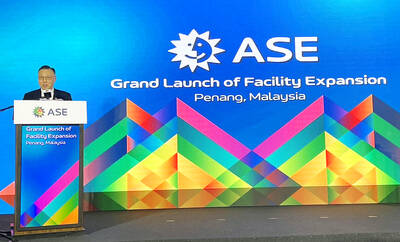Anyone shopping for a new vehicle in China is in the right place at the right time. The world’s largest auto market is in the midst of a heated price war, and the situation is only intensifying.
In the first quarter, a total of 649 variants of passenger vehicles, or about 20 percent of all vehicles on the market, saw transaction price drops of more than 10,000 yuan (US$1,454), analysis based on information compiled by research provider China Auto Market showed.
Back in February, that percentage was just 12 percent of all vehicle versions, and it was as small as 6 percent this time last year.

Photo: Reuters
As competition intensifies, domestic and international automakers are aggressively cutting prices to outpace rivals. Some companies initiated price reductions quickly off their own bats as they saw what was happening around them, while others have been able to piggyback off incentives offered by local governments as part of broader economic stimulus packages.
Toyota Motor Corp’s bZ4X, an electric SUV, has recorded the most significant sustained price drop this year in China, the data showed. The model’s 400km range Elite JOY version had a transactional price of 139,380 yuan last month, down 30 percent from December last year, while German premium makers Audi and BMW are also offering generous discounts, particularly on their electric models.
While it is not unusual for automakers and dealers to give out incentives to clear older model inventory, it has raised concerns among analysts about shrinking profit margins, not to mention potential compromises to quality and innovation.
China’s Association of Automobile Manufacturers has called for an end to the price war, saying it is not a long-term solution to a slowdown in sales and accumulation of stock.
It has called for a “return to normal operation” to ensure the auto market’s healthy development.
What is worrying is that it remains unclear whether some of the automakers that have desperately placed their hopes on price cuts and cash incentives to spur sales have an exit plan. Is this just a race to the bottom and let the bankrupt carcasses pile up? There is also the concern that spoiled customers might resist a return to normal pricing, which might result in a distorted market.

Taiwan Semiconductor Manufacturing Co (TSMC, 台積電) yesterday said that its investment plan in Arizona is going according to schedule, following a local media report claiming that the company is planning to break ground on its third wafer fab in the US in June. In a statement, TSMC said it does not comment on market speculation, but that its investments in Arizona are proceeding well. TSMC is investing more than US$65 billion in Arizona to build three advanced wafer fabs. The first one has started production using the 4-nanometer (nm) process, while the second one would start mass production using the

A TAIWAN DEAL: TSMC is in early talks to fully operate Intel’s US semiconductor factories in a deal first raised by Trump officials, but Intel’s interest is uncertain Broadcom Inc has had informal talks with its advisers about making a bid for Intel Corp’s chip-design and marketing business, the Wall Street Journal reported, citing people familiar with the matter. Nothing has been submitted to Intel and Broadcom could decide not to pursue a deal, according to the Journal. Bloomberg News earlier reported that Taiwan Semiconductor Manufacturing Co (TSMC, 台積電) is in early talks for a controlling stake in Intel’s factories at the request of officials at US President Donald Trump’s administration, as the president looks to boost US manufacturing and maintain the country’s leadership in critical technologies. Trump officials raised the

‘SILVER LINING’: Although the news caused TSMC to fall on the local market, an analyst said that as tariffs are not set to go into effect until April, there is still time for negotiations US President Donald Trump on Tuesday said that he would likely impose tariffs on semiconductor, automobile and pharmaceutical imports of about 25 percent, with an announcement coming as soon as April 2 in a move that would represent a dramatic widening of the US leader’s trade war. “I probably will tell you that on April 2, but it’ll be in the neighborhood of 25 percent,” Trump told reporters at his Mar-a-Lago club when asked about his plan for auto tariffs. Asked about similar levies on pharmaceutical drugs and semiconductors, the president said that “it’ll be 25 percent and higher, and it’ll

CHIP BOOM: Revenue for the semiconductor industry is set to reach US$1 trillion by 2032, opening up opportunities for the chip pacakging and testing company, it said ASE Technology Holding Co (日月光投控), the world’s largest provider of outsourced semiconductor assembly and test (OSAT) services, yesterday launched a new advanced manufacturing facility in Penang, Malaysia, aiming to meet growing demand for emerging technologies such as generative artificial intelligence (AI) applications. The US$300 million facility is a critical step in expanding ASE’s global footprint, offering an alternative for customers from the US, Europe, Japan, South Korea and China to assemble and test chips outside of Taiwan amid efforts to diversify supply chains. The plant, the company’s fifth in Malaysia, is part of a strategic expansion plan that would more than triple